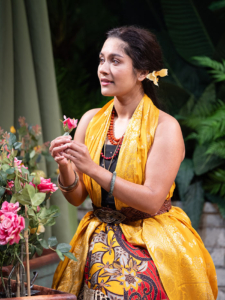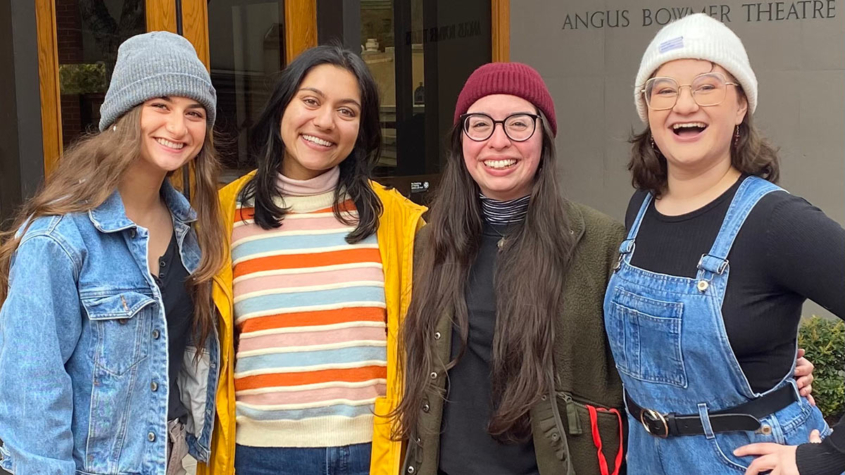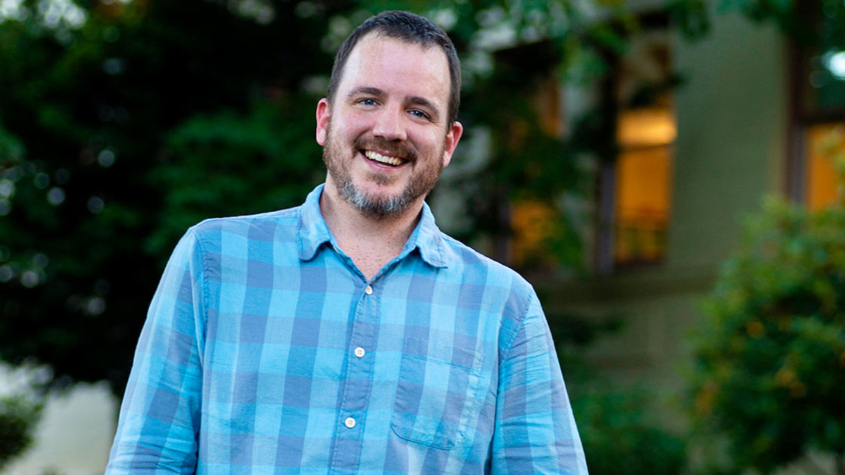(Ashland, Ore.) — Sitting in the backseat of her family’s car after a third-grade play, Thilini Dissanayake surprised her mother with a bold declaration: “I wanna be famous.” That moment – following her turn as the Little Red Hen in her class play – sparked a love for acting that would lead Dissanayake to Southern Oregon University and now to the Oregon Shakespeare Festival, where she stars this season as Cecily in “The Importance of Being Earnest.”

Photos by Jenny Graham, courtesy of the Oregon Shakespeare Festival.
“Understandably, (my mom) shot that down – the nomadic and uncertain career of a professional actor was not the future my immigrant parents would have ever dreamed of for me,” Dissanayake said. “Nevertheless, every musical, play, workshop and summer camp I did over the next 10 years made me hungrier.”
By her junior year of high school, Dissanayake had made a decision: “I would never forgive myself if I didn’t at least give it the old college try.”
She arrived at SOU in fall 2019 and graduated in fall 2023 with a bachelor of fine arts degree in Theatre Performance. Though she had options, SOU stood out for its conservatory-style training, professional partnerships and affordability.
“SOU was the only school that offered a competitive, conservatory-style training, distinguished faculty, internships and apprenticeships with a professional equity theater and an education I could afford due to scholarships and in-state tuition,” she said. “It was also important to me to attend an accredited university with other robust programs available rather than just a conservatory, in case I ever decided to change career paths.”
Now at OSF, Dissanayake draws directly on the training she received at SOU. Over two years, she immersed herself in a rigorous curriculum: acting, movement, voice, Shakespeare, clowning, dialects, business of acting and more.
“It’s remarkable how applicable my training has been, working at OSF so far,” she said.
In “Jane Eyre,” her OSF debut, she performed in the outdoor Elizabethan Theatre as Young Jane and Adele.
“My voice and movement training was crucial to creating large choices for my characters and to audibly project in a venue that holds over a thousand people,” she said.
In “The Importance of Being Earnest” – set in the 1890s Malay Peninsula, with a regular slate of performances now through October – Dissanayake plays Cecily, with a custom-built accent that blends RP British, South Indian and Malaysian speech patterns. She credits her ability to shape those nuances to SOU’s coursework in the International Phonetic Alphabet and accents.
“My education at SOU has done a phenomenal job preparing me for professional theater,” she said. “I have worked with several peers my age who have recently graduated from elite undergraduate theater programs such as NYU, Carnegie Mellon and even graduate programs such as Yale and UCSD. I can confidently say that SOU Theater’s BFA in performance offers an equally comparable education to those distinguished programs.”
Desdemona Chiang, director of OSF’s “The Importance of Being Earnest,” praised Dissanayake’s skills as an actress.
“Lini was an absolute delight to work with on ‘Earnest,’” Chiang said. “She brought a natural grace and radiance to the role of Cecily, and a strong work ethic to the process. She was dedicated to the role, constantly prepared and eager to explore the work with her scene partners. She was always ready to try, ready to fail, and always in pursuit of something greater, richer and more interesting. I loved her curiosity through the process – she is the kind of actor every director loves to have contributing in the room.”
Dissanayake’s years at SOU were not without challenges – especially during the COVID-era pivot to outdoor instruction.
“My cohort started our BFA in the fall of 2021,” she said. “With social distancing and mask requirements, we spent the first half of our term outside, wearing masks, in tents – yes, tents. “It was ridiculous, but also the best. There was so much grace and positivity because we were all just so grateful to do what we loved in-person again.”
Dissanayake attributes much of her growth to SOU’s dedicated faculty, especially professors Jackie Apodaca, Brendan McMahon and former voice and speech professor Ginger Eckhert.
“I think my time was so impactful in this program because the faculty put so much heart and soul into their students,” she said. “They pushed our strengths, and made us face our weaknesses.
“There was a time with each of these three professors where they pulled me aside while I was struggling and asked, ‘how can I support you?’ When I expressed what I needed, they showed up.”
She singles out Apodaca for her mentorship and advocacy.
“Jackie Apodaca has advocated for me and my peers time and time again,” Dissanayake said. “I cannot thank her enough for the opportunities she has built and provided for her students through (the Ashland New Plays Festival), the OSF Trainee Program and other professional gigs.”
Performing on OSF’s stage today brings Dissanayake full circle.
“The first OSF production I ever saw with my family was their 2012 production of ‘As You Like It’ in the Elizabethan Theater,” she said. “I was so deeply moved to see people who looked like me telling classical stories on that beautiful stage. At 11 years old, I saw a possibility in which the lifestyle I dreamed of was achievable.
“I don’t know if I possess all the words to express the gratitude I feel to be here now,” Dissanayake said. “I know that little Lini would think the world of me, and every day I go to work I hope that there’s a kid out in the audience that thinks, ‘maybe I could do that, too.’”
As she looks to the future, Dissanayake’s dream is simple: to keep doing the work.
“This may not seem like the most grand or ambitious answer, but as I continue to work in professional theater, I’m learning how precious it is to stay booked,” she said. “So long as I continue to be able to make a living telling stories, in whatever capacity that may be, I feel like I’m living the dream.”
Her advice to SOU students? “Be brave, be bold, be humble,” she said. “Your fears and doubts don’t always get smaller, but you can grow bigger to face them. Kindness to yourself and others takes you farthest.”
-SOU-











